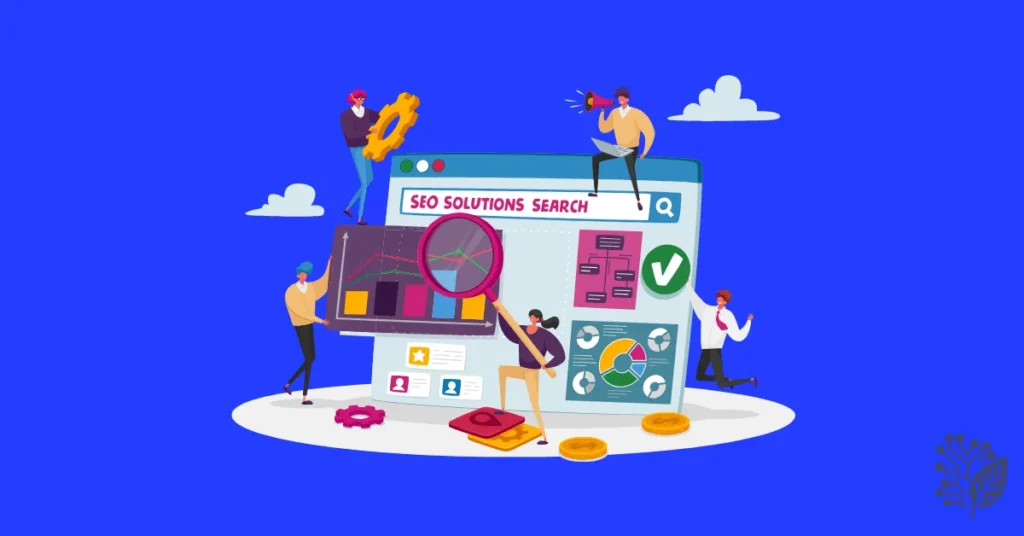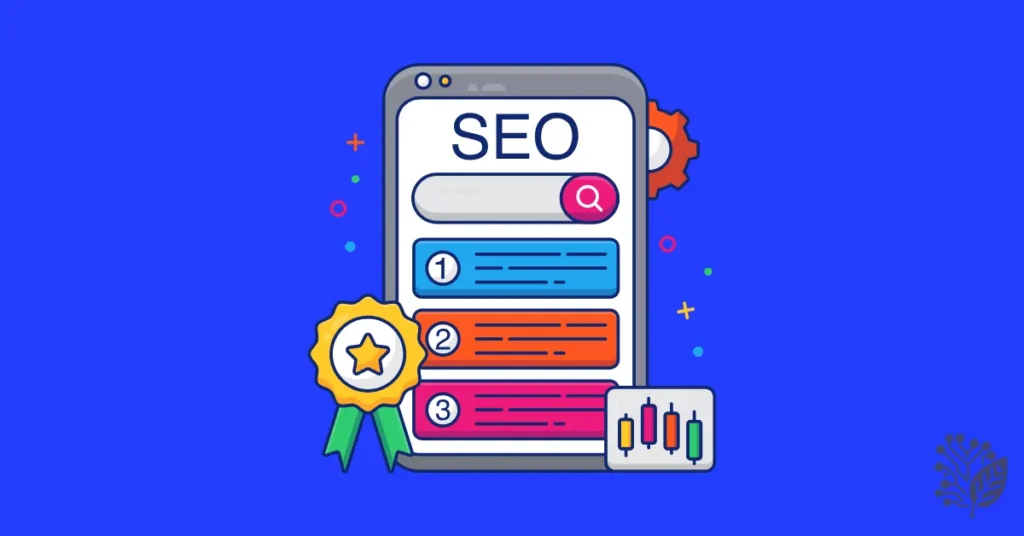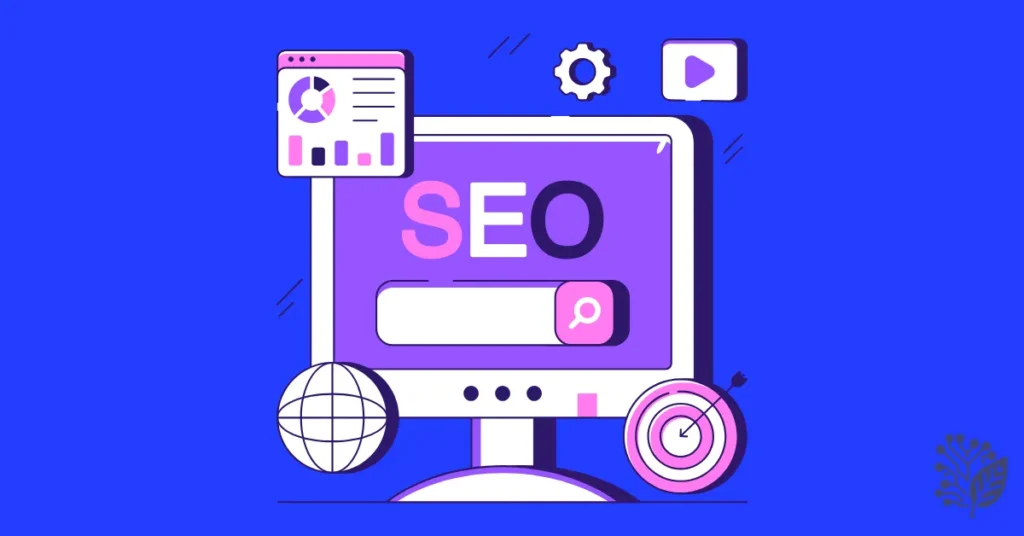In the world of digital marketing, On Page SEO stands as one of the most fundamental practices for enhancing your website’s visibility on search engines. Simply put, On Page SEO refers to the optimization of individual pages of a website to improve its search engine ranking and visibility. This includes adjusting various on site elements such as content, HTML tags, images, and internal linking.
At its core, On Page SEO ensures that your website is structured in a way that search engines can easily crawl and understand, while also providing a user friendly experience. Without effective On Page SEO, even the best content and the most innovative ideas can go unnoticed in search results.
The significance of On Page SEO is immense, as it serves as the foundation for all other SEO strategies. When done correctly, On Page SEO not only helps boost your search engine rankings but also enhances user engagement, reduces bounce rates, and drives higher conversion rates.
For more information, check out On Page SEO Checklist and On Page SEO Techniques.
Why On Page SEO is More Important Than Ever in 2025

As we progress through 2025, the SEO landscape continues to transform. Google’s updates, such as Core Web Vitals and the Helpful Content Update, have made On Page SEO even more crucial than before. These updates focus on improving the user experience, rewarding websites that prioritize speed, accessibility, and high quality, relevant content.
One key factor influencing this shift is user experience (UX). Websites that offer a positive and engaging user experience are now given priority in search engine rankings. E-E-A-T (Experience, Expertise, Authoritativeness, and Trustworthiness) is a major component of Google’s ranking algorithm, meaning that websites offering content that demonstrates authority and expertise will fare better in search results. This is why it’s important to focus on On Page SEO strategies that improve both user satisfaction and trust.
For instance, Core Web Vitals evaluate factors such as page load time, interactivity, and visual stability. These factors are now integrated into Google’s algorithm, making On Page SEO critical to providing an optimized user experience. Websites that load swiftly, are mobile friendly, and offer valuable content have a higher chance of ranking well.
Key Elements of Effective On Page SEO

Effective On Page SEO encompasses a variety of elements that work together to improve your website’s ranking. Let’s take a deeper dive into each of these key components.
1. High Quality, Original Content
Content is king. Google’s algorithm rewards websites that offer high quality, original, and user focused content. When creating content, it’s important to keep the reader’s intent in mind. Your content should answer the questions users are asking, provide solutions to their problems, and offer value in a way that is unique and engaging.
For example, creating in depth content that addresses the complexities of a topic helps establish your site as an authoritative resource. When users find content that answers their questions in detail, they are more likely to spend time on your site, improving engagement metrics that contribute to your SEO performance.
2. Keyword Research and Natural Placement
Successful On Page SEO depends greatly on thorough keyword research. Before optimizing your content, it’s essential to understand which keywords your target audience is searching for. However, it’s important to focus on natural keyword placement, don’t overstuff your content with keywords in an attempt to rank higher. Instead, strategically incorporate them into headings, subheadings, and body text in a way that flows naturally.
Tools like Google Keyword Planner or SEMrush can help identify relevant keywords for your niche, enabling you to build content that answers search queries effectively.
3. SEO Friendly Title Tags
Your title tag is the first element that both users and search engines encounter when your page appears in search results. A compelling title tag encourages clicks, while also signaling to search engines what your page is about. It’s crucial to include your focus keyword here, while keeping the title concise and engaging.
Title tags should ideally be under 60 characters to ensure they display properly in search results. For example, a title like “What is On Page SEO? A Complete Guide for What is On Page SEO? Complete Guide for Beginners in 2025” is concise, clear, and contains the target keyword.
4. Compelling Meta Descriptions
Although meta descriptions don’t directly affect rankings, they play a key role in influencing click-through rates (CTR), which can impact your site’s performance in search results. A well crafted meta description should summarize your page’s content, include the focus keyword, and entice the user to click through. Keep it under 160 characters to ensure it fits properly in search results.
5. Proper Heading Structure (H1, H2, H3)
Headings play a significant role in organizing content for both users and search engines. Use H1 for your main title (typically the page title), and H2 and H3 for subheadings and sections within your content. Each heading should clearly describe the section’s content, and whenever possible, include your focus keyword in these headings.
Headings help users quickly find the information they need, improving their overall experience on your site.
6. Clean and Short URLs
URLs that are concise, descriptive, and include your focus keyword are more likely to rank well. Steer clear of long, complicated URLs with unnecessary parameters. A clean URL like www.yoursite.com/on-page-seo-guide is more SEO friendly than www.yoursite.com/page?id=12345.
7. Optimized Internal Linking Strategy
Internal linking helps distribute link equity across your site, making it easier for search engines to crawl and index your pages. It also improves user navigation by guiding them to related content. For example, if you’re discussing On Page SEO, you can link to a relevant article such as Advanced Technical SEO to provide further insights.
8. External Linking to Trusted Sources
Incorporating external links to authoritative sites can increase your page’s trustworthiness and provide additional context for users. When citing studies or referencing industry standards, linking to trusted sources like Google’s Search Central or Moz can improve the credibility of your content.
9. Image Optimization (Alt Text, Size, Lazy Loading)
Images are crucial for enhancing user experience, but they must be optimized to ensure fast load times. Alt text should provide a clear description of the image while incorporating relevant keywords to enhance SEO. Reducing image file sizes and implementing lazy loading can significantly improve page speed.
For more on image optimization, check out this guide to image optimization.
10. Mobile Friendliness and Page Speed Optimization
Given the shift to mobile-first indexing, making sure your website is mobile-friendly is essential, not optional A responsive design that adapts to different screen sizes is critical. Additionally, optimizing your page speed can help reduce bounce rates and improve rankings. Google’s PageSpeed Insights can help identify areas for improvement.
11. Schema Markup and Rich Snippets
Schema markup provides search engines with additional context about your content, which can result in enhanced listings in the search results, such as rich snippets. Implementing schema can help Google better understand your content and improve visibility in the search results.
For more on implementing schema, refer to this guide to schema markup.
On Page SEO vs Off Page SEO: What’s the Difference Between?
| Aspect | On Page SEO | Off Page SEO |
|---|---|---|
| Definition | Optimization of content and HTML elements on your site | Actions taken outside your site to improve rankings |
| Focus | Content, keywords, HTML tags, internal linking, etc. | Backlinks, social media presence, brand mentions |
| Impact | Direct control over content and structure | Indirect impact through external signals |
| When to Focus | Always, as it impacts the foundation of your SEO efforts | Focus after establishing a solid On Page SEO base |
How to Do On Page SEO Step by Step

Step 1: Start with User Intent
Understanding the user’s intent behind a search query is key to creating valuable content. Are they seeking information, a product, or a solution to their problem? Address their needs directly with clear and detailed content.
Step 2: Pick Your Focus Keyword
Choose a focus keyword that reflects the content of your page and aligns with the search queries of your target audience. Leverage tools such as Google Keyword Planner or Ahrefs Webmaster Tools to identify keywords that have a strong search volume but low competition.
Step 3: Optimize Titles and Descriptions
Make sure your title tags and meta descriptions are tailored to both user intent and SEO best practices. These elements should encourage users to click and tell search engines exactly what the page is about.
Step 4: Create High Quality, User Focused Content
Your content should offer thorough, valuable, and well researched insights. Make it easy to read and ensure it answers the search intent fully.
Step 5: Structure Your Content for SEO
Use headings, subheadings, and bullet points to break up your content into digestible sections. This not only helps users read and understand your content better but also makes it easier for search engines to index.
Step 6: Improve Internal Linking
Use internal links to connect related articles or pages on your website. This will improve the user experience and help search engines discover more content.
Step 7: Boost Page Speed and Mobile UX
Test your page speed using tools like Google PageSpeed Insights and take action to optimize loading times. Ensure that your website is fully responsive and provides a seamless user experience on mobile devices.
Step 8: Implement Schema Markup
Add schema markup to your pages to help search engines understand the context of your content and display rich snippets in the search results.
Advanced On Page SEO Techniques for 2025
Optimizing for Featured Snippets
To enhance your chances of appearing in featured snippets, format your content to provide direct answers to specific questions. Use bullet points, numbered lists, and clear, concise answers to improve your chances of appearing in the snippet.
Using NLP and Semantic Keywords
Natural Language Processing (NLP) helps search engines understand the context of words and phrases. Using semantic keywords and related terms can improve the relevance of your content and help it rank higher for various queries.
Voice Search and Mobile First Optimization
With the rise of voice search, optimizing your content for conversational queries is becoming increasingly important. Additionally, ensure that your website is optimized for mobile first indexing, as mobile optimization is now a critical ranking factor.
AI Tools for Content Optimization
AI tools like Surfer SEO or Clearscope can assist in optimizing your content for better ranking by analyzing top performing pages and suggesting keyword placements, content gaps, and improvements.
Experience Signals (UX, Dwell Time, Bounce Rate)
User experience signals, including dwell time, bounce rate, and page interactions, have a direct effect on SEO performance. Focusing on improving these signals can lead to better rankings and improved user engagement.
Common On Page SEO Mistakes to Avoid
Keyword Overuse (Keyword Stuffing)
Avoid stuffing keywords into your content. This can lead to penalties and poor user experience. Instead, focus on creating natural, readable content with a variety of related keywords.
Ignoring Core Web Vitals
Google’s Core Web Vitals play a crucial role in determining rankings in 2025. Ensure that your site meets Google’s standards for page speed, visual stability, and interactivity.
Weak Internal Linking
A strong internal linking strategy ensures that your users and search engines can easily navigate your site. Avoid weak or irrelevant internal links.
Duplicate or Thin Content
Duplicate or low quality content can harm your rankings. Always aim to create original, valuable content that provides detailed insights into the topic at hand.
Real Examples of Great On Page SEO (Case Studies)
- Website A: By optimizing for Core Web Vitals and providing high quality, original content, Website A saw a 30% increase in organic traffic within three months.
- Website B: Through effective use of schema markup and internal linking, Website B improved its rankings for long tail keywords, leading to higher visibility and traffic.
Final Thoughts
On Page SEO is a fundamental element of any effective digital marketing strategy. By optimizing your content, structure, and user experience, you’ll be on your way to improving rankings, driving more traffic, and ultimately growing your online presence. Start implementing these On Page SEO strategies today, and you’ll see the benefits unfold.
FAQs
How does On Page SEO compare to Technical SEO?
On Page SEO focuses on optimizing visible elements like content and meta tags, while Technical SEO addresses backend issues such as website speed and search engine accessibility.
How many keywords should I focus on for a single page?
It’s best to concentrate on one primary keyword per page, while naturally integrating related terms to support your main topic.
Will On Page SEO alone guarantee my website ranks?
No, On Page SEO is vital but needs to be paired with other strategies, such as Off Page SEO and high-quality content, for effective ranking.
How often should I review my On Page SEO?
You should update your On Page SEO regularly, ideally every few months or when significant changes in search trends or algorithms occur.
Why is internal linking crucial for On Page SEO?
Internal links guide search engines to better understand your website structure and help users discover more content, enhancing both rankings and user engagement.
How can I make my site more mobile-friendly for On Page SEO?
Ensure your website has a responsive design that adjusts to different screen sizes, and optimize images to load quickly on mobile devices.
Does schema markup improve On Page SEO?
Yes, schema markup provides additional context to search engines, which can lead to enhanced visibility and higher click-through rates in search results.
What role does page speed play in On Page SEO?
Page speed is a critical ranking factor. Faster pages provide a better user experience, reduce bounce rates, and help improve your rankings.
What is keyword stuffing, and how can I avoid it?
Keyword stuffing is the excessive use of keywords in unnatural ways. Avoid this by integrating keywords naturally and maintaining focus on providing valuable, informative content.
Why is content quality so important for On Page SEO?
High-quality content that answers users’ queries signals to search engines that your page is relevant, authoritative, and deserving of higher rankings.






